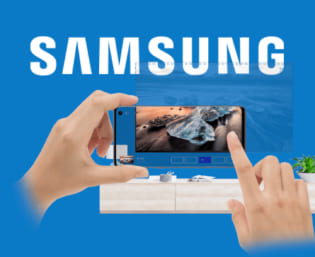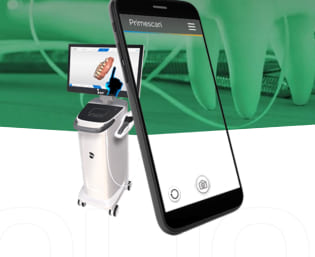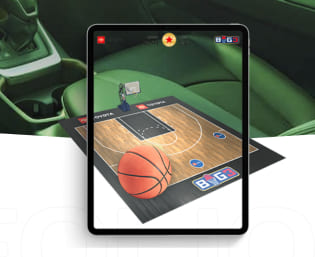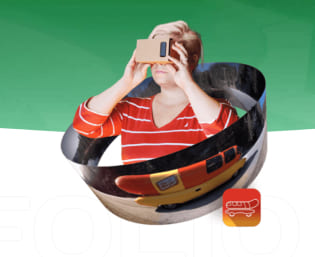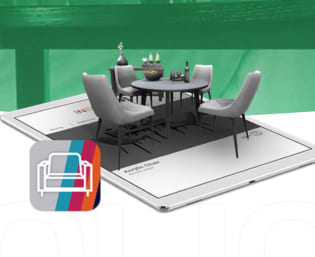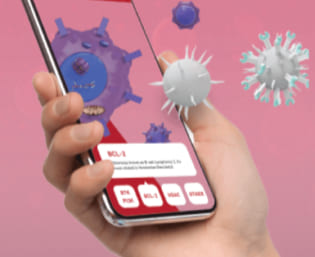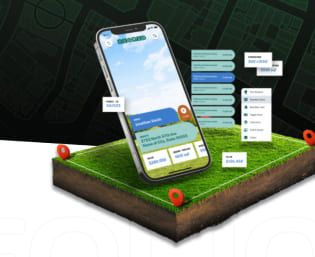Unlock the Power of Augmented Reality
Experience the future of technology with Gravity Jack, the leading augmented reality developers in the United States. Discover how AR can transform your business, captivate your audience and create real time results
THE NEXT UP AND COMING TECHNOLOGY
Numbers Don’t Lie AR is Transforming the Industry
Augmented Reality (AR) is ushering in a paradigm shift, transforming industries globally and positioning itself as the technological frontier akin to the next dot-com boom.
Gravity Jack has been in this industry since 2009 and have been pioneers ever since.
TRUSTED BY OVER 300 CLIENTS

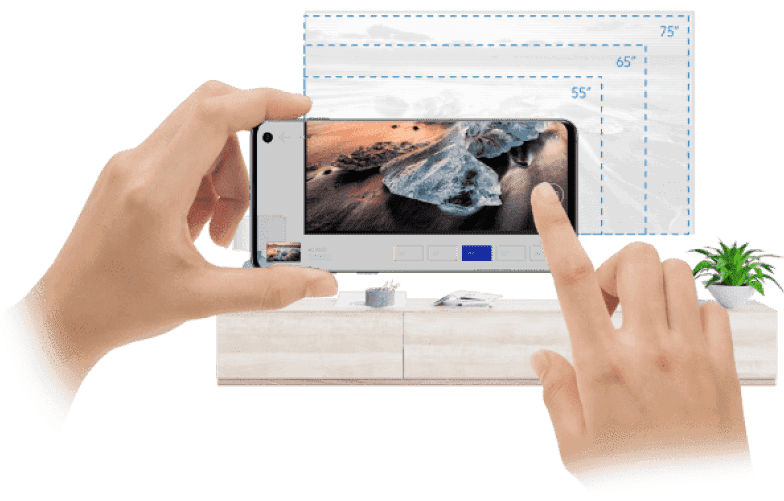
DO THESE PROBLEMS SOUND FAMILIAR?
AR Might Be Right For Your Business
All businesses want to learn and implement better strategies to increase conversions, engagement, retention and more. Let Augmented Reality be that next strategy that creates results.
Struggling with engagement rates? AR increases that by more than 45%.
Need more efficient processes? 82% increase in employee productivity and effectiveness when using AR
Struggling to find a competitive edge? Well, 79% of large business believe AR is the next thing to help.

Embrace the Next Tech Revolution
Invest in an AR Experience for Amazing Results
WHAT AR CAN DO FOR YOU
The Four Value Points of AR
Discover how augmented reality can transform your business and captivate your audience. With cutting-edge technology and immersive experiences, you can engage customers like never before.
Enhance Engagement
Immerse your customers in interactive AR experiences that leave a lasting impression. From virtual try-ons to 3D product visualizations, you can create memorable moments that drive conversions.
Boost Sales
With AR, you can showcase your products in a whole new way, allowing customers to visualize and interact with them in real-time. This is called a “Try Before You Buy” experience. This level of engagement leads to increased sales, customer satisfaction and reduced returns.
Stay Ahead
In today’s competitive landscape, embracing AR technology is essential to stay ahead of the curve. By adopting innovative solutions, you can differentiate your business while heading towards the new tech medium.
Drive Innovation
AR opens up a world of possibilities for businesses, allowing them to create unique experiences that push boundaries. By embracing this technology, you can drive innovation and establish yourself as a leader in your industry.
GRAVITY JACK CLIENT BLOG GALLERY
Augmented Reality
for Your Business
Augmented Reality: A Guide to Understanding Its Impact on Business, Products, and Branding
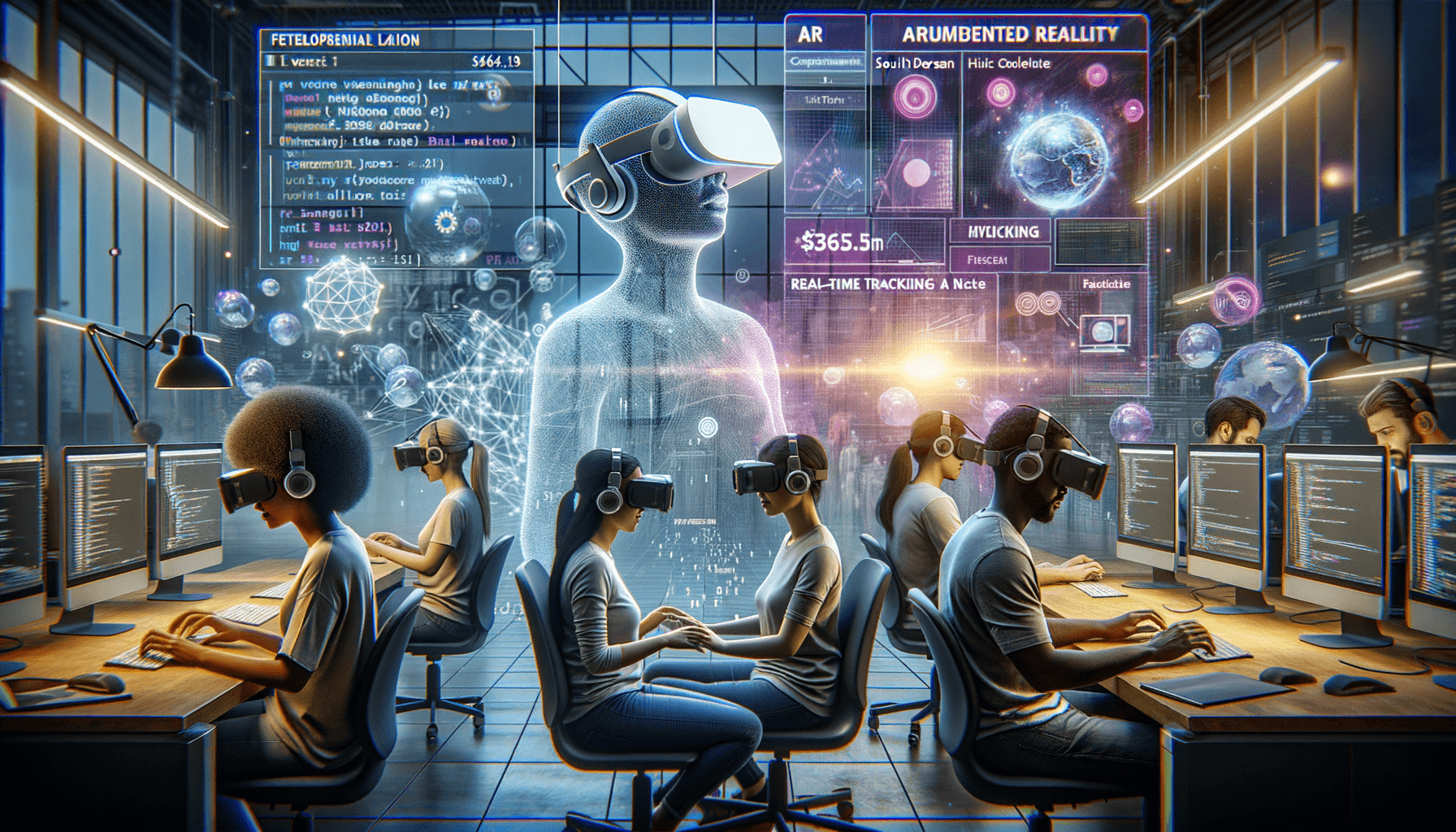
Navigating the Future: Augmented Reality in Navigation and Wayfinding
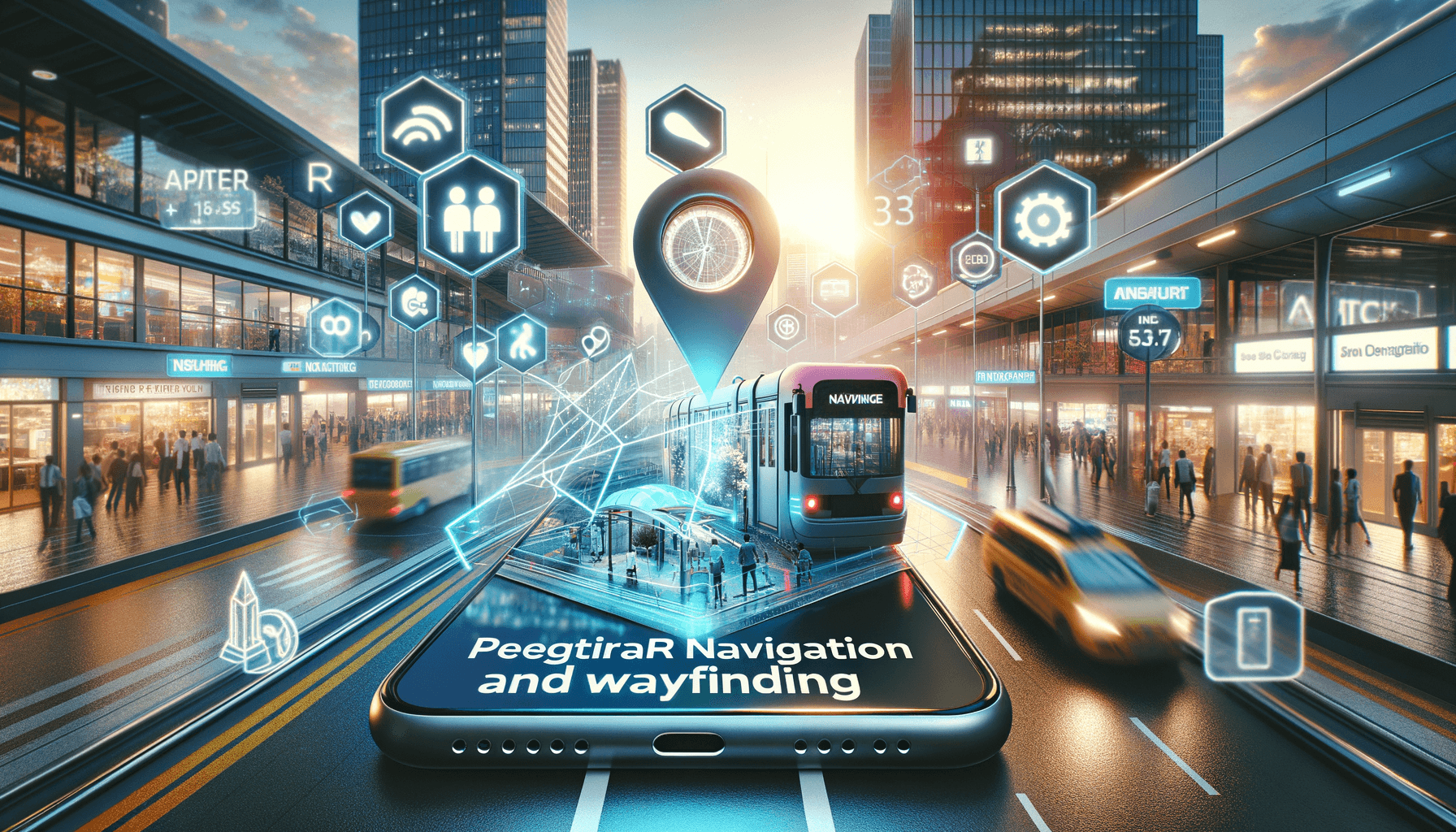
How Augmented Reality and Social Media are Transforming Digital Communication and Engagement
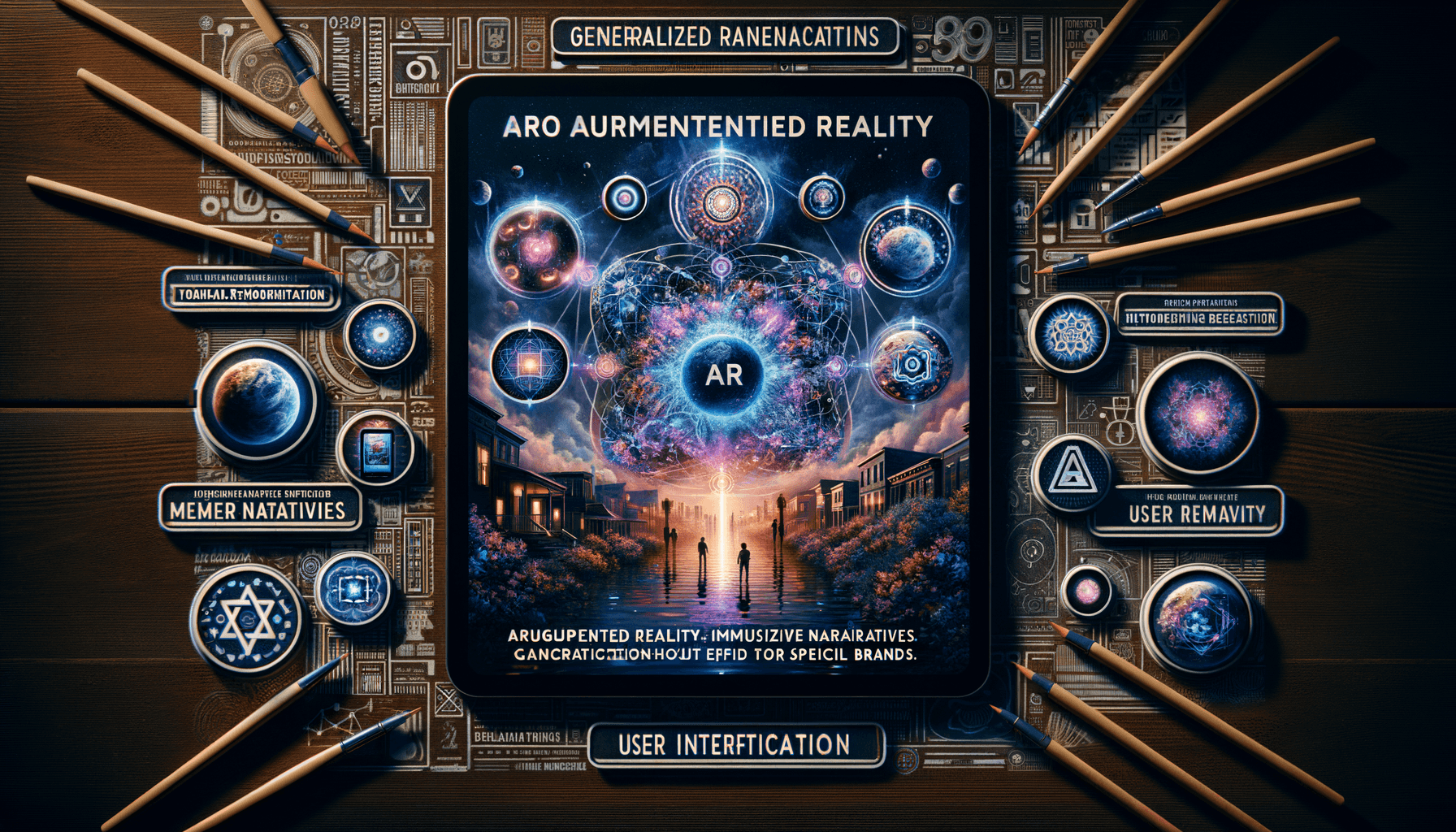
The Future of Education: Augmented Reality in the Classroom
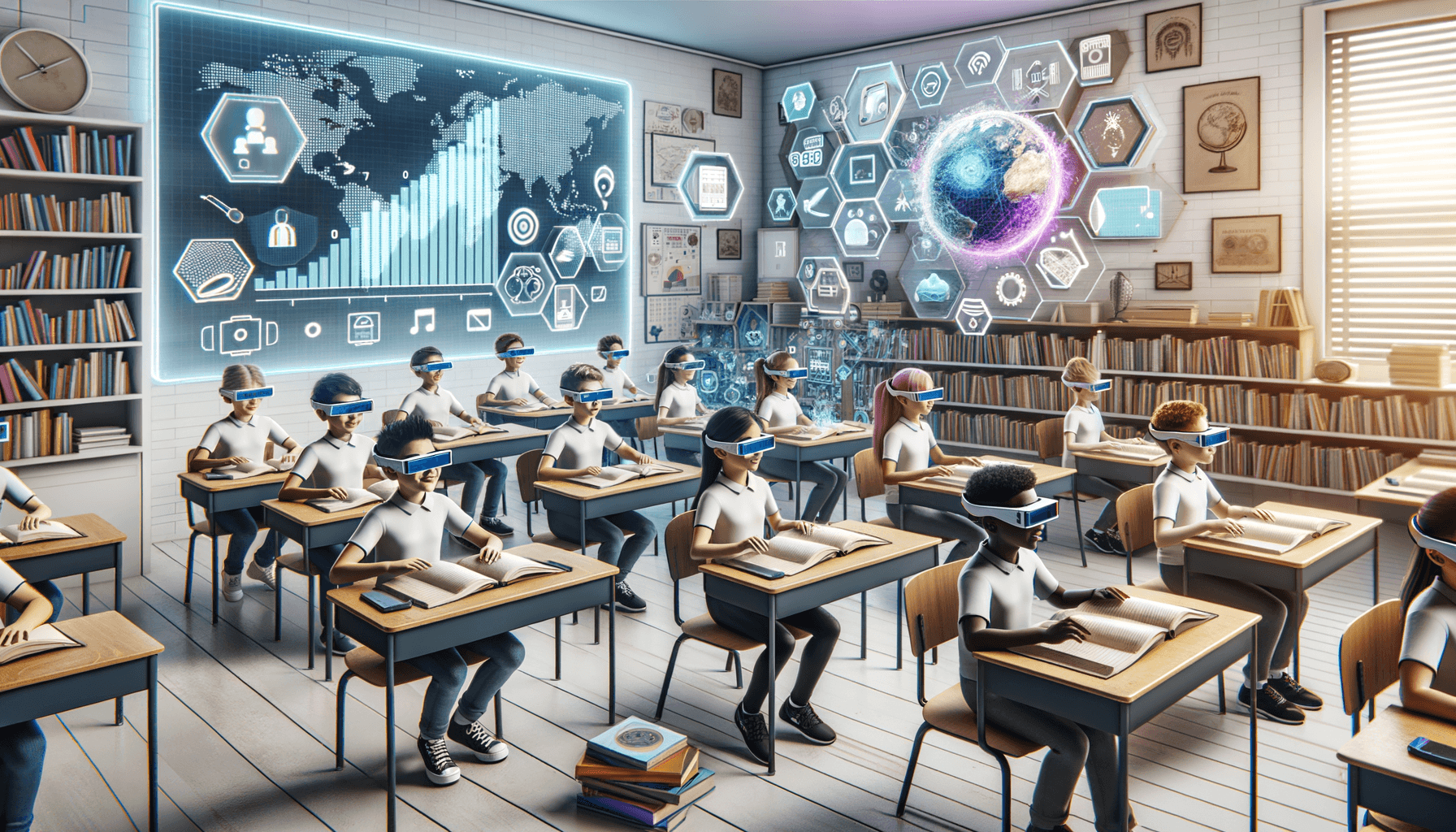
How Augmented Reality Is Revolutionizing Retail Experiences

Designing for AR: Best Practices in Augmented Reality App Development
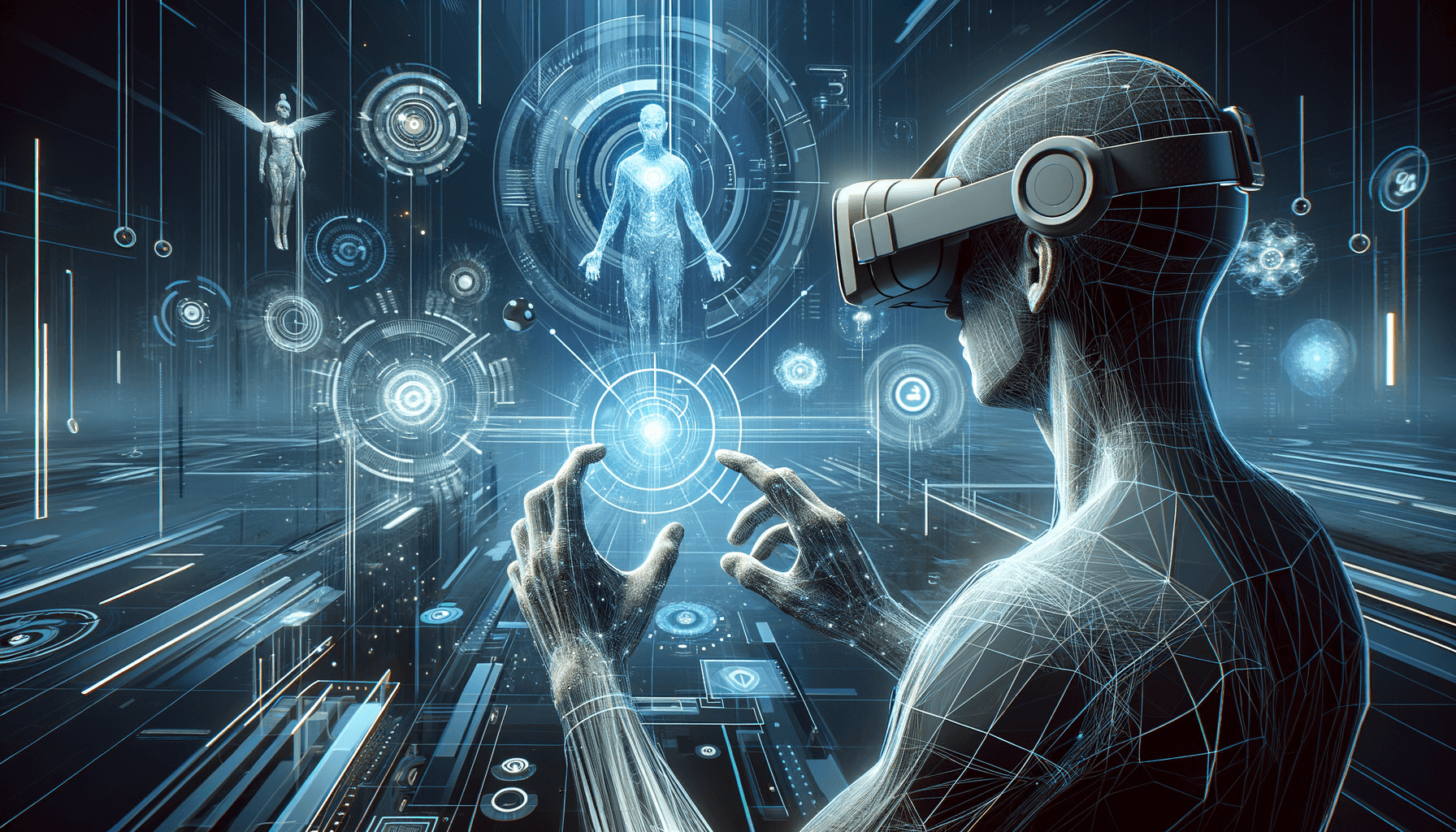

GRAVITY JACK MINI BLOGS
Augmented Reality: A Guide to Understanding Its Impact on Business, Products, and Branding
AR Applications Development: Best Practices, Key Considerations, and Insights
Introduction
The realm of Augmented Reality (AR) applications is rapidly growing, with projections placing its market value at an astounding $3664.5 million by 2025. At Gravity Jack, we are at the forefront of this evolution, offering expertise and cutting-edge solutions in AR application development. We understand the significance of this technology and are dedicated to helping our clients leverage the potential of AR to enhance their business operations and customer experiences.
User Experience Design Principles in AR Development
-
User-Centered Approach: Our development process is driven by a deep understanding of our users' needs. By following the approach of industry leaders like Snap Inc. and Niantic, we integrate user feedback to refine and improve the AR experience continuously.
-
Immersive and Interactive Design: We aim to create realistic and immersive AR environments. For example, our designs are inspired by the successes of apps like Ikea Place, ensuring users enjoy a lifelike virtual experience.
-
Simple and Intuitive Interfaces: We believe in the power of simplicity and strive to design AR applications that are straightforward and easy to navigate, similar to the acclaimed user interface of Facebook's AR Studio.
Technical Challenges and Solutions in AR Development
-
Real World Tracking and Registration Issues: Our team is skilled in addressing the common challenges of rendering AR objects in real-time. We use sophisticated technologies like those found in ARCore and ARKit to enhance environmental understanding and realism.
-
Device Compatibility: To reach the broadest possible audience, we develop applications with cross-platform compatibility in mind, employing tools such as Unity3D.
-
Battery Consumption: We optimize our applications to minimize battery usage, taking cues from industry practices like the energy-efficient ARCore design integrations by Samsung.
AR Optimization for Different Mobile Platforms
-
iOS: Taking advantage of Apple's ARKit, we have the capabilities to create bespoke AR experiences for iOS devices, enriched by the platform's robust resources and tools.
-
Android: We harness the flexibility of ARCore by Google to deliver captivating AR experiences, making them available across a diverse array of Android devices.
Implementation Best Practices in Apple Vision Pro and Oculus Quest 3
-
Apple Vision Pro: Our development with ARKit extends to the Apple Vision Pro, where we utilize LiDAR technology to achieve exceptional spatial awareness and realistic object integration.
-
Oculus Quest 3: In our work with Oculus, we focus on maximizing comfort and immersion, integrating features like noise-cancellation and a 120Hz refresh rate to enhance visual fluidity and comfort.
Market Leaders in AR Development
Our team closely monitors market leaders such as Snap Inc., famous for Snapchat's AR filters, and Niantic, which propelled AR into the mainstream with Pokémon GO. We draw inspiration from their innovation, striving to push the boundaries of what is possible with AR technology.
Conclusion
Enveloped in the continuously expanding AR landscape, Gravity Jack is committed to providing solutions that not only adhere to industry best practices but also push the envelope of creative and technical possibilities. With our deep roots in AR development, backed by a history of success stories, we are uniquely positioned to offer tailored, high-quality AR experiences. Our team is ready to collaborate with you to explore transformative AR solutions that align with your goals and exceed your expectations.
For a consultation or to learn more about our services, please reach out to us. Let's harness the potential of AR to create engaging, innovative applications that captivate your audience and elevate your brand.

GRAVITY JACK MINI BLOGS
Navigating the Future: Augmented Reality in Navigation and Wayfinding
Navigating the Future: The Emergence of AR in Wayfinding Applications
Introduction
In today's fast-paced world, the integration of Augmented Reality (AR) into navigation and wayfinding has surfaced as a vibrant field, revolutionizing how we interact with our environment. As pioneers in the AR realm, our company stands at the forefront of crafting immersive experiences that seamlessly overlay the digital onto the physical, enhancing user navigation in a multitude of settings.
Market Growth & Adoption
Recent data points to a burgeoning AR navigation market, expected to leap from $2.35 billion in 2020 to a staggering $10 billion by 2026. Such growth is propelled by the increased adoption of smartphones, which have become the portals through which AR technology springs into action, facilitating advances in sectors including transportation, tourism, and urban planning.
AR-Based Navigation Tools
With industry giants like Google introducing "Live View" for pedestrian directions, AR-based navigation tools are changing the very fabric of travel. Our contribution to this domain includes developing intuitive AR navigation solutions that offer unparalleled ease and engagement for users on the move.
Indoor Mapping Solutions
The era of getting lost indoors is drawing to a close, thanks to AR innovations in precise indoor mapping. Our team is skilled in leveraging platforms like Microsoft's Azure spatial anchors to craft applications that make indoor spaces as navigable as their outdoor counterparts.
Location-Based AR Experiences
Our expertise extends to creating location-based AR experiences that are both engaging and informative. Drawing inspiration from games like Pokémon Go, we apply these playful elements to guide users through real-world environments in a method that is both fun and functional.
Impact on Verticals
Our services address various industries by integrating AR applications to address their unique challenges and opportunities:
-
Transportation: We design AR solutions that provide real-time navigation, highlight potential hazards, and pinpoint nearby amenities, streamlining the travel experience for drivers and pedestrians alike.
-
Tourism: Visitors can immerse themselves in local culture with our AR apps, which enrich the sightseeing experience by delivering rich contextual information about landmarks and attractions.
-
Urban Planning: By partnering with urban developers, we apply AR to visualize future projects in situ, aiding in better planning and community engagement.
Successful Companies
We are in the company of other industry leaders like Apple and Google in pushing the boundaries of what AR can achieve in navigation. Our team has the expertise and technological acumen to develop solutions that stand shoulder to shoulder with the best in the business.
Conclusion
As the oldest augmented reality company in the United States, we bring a wealth of experience and innovation to the table. We provide diverse AR solutions that reinvent how individuals navigate and interact with their surroundings, from bustling city streets to the intricate corridors of an indoor space. Whether enhancing a visitor's journey through a historical site or aiding a city in resurrecting its architectural past, our AR wayfinding applications pave the way for a more connected and informed world.
We invite you to affiliate with a seasoned visionary in the AR domain. Consider our services for your navigation and wayfinding needs, where proficiency meets imagination to navigate the path ahead.

GRAVITY JACK MINI BLOGS
How Augmented Reality and Social Media are Transforming Digital Communication and Engagement
Augmented Reality and Social Media: A Match Made in Digital Heaven
Introduction
In an era where digital innovation is paramount, Augmented Reality (AR) technologies have established themselves as a significant trend within the digital marketing world. Social media platforms, recognizing this potential, have eagerly adopted various AR features such as filters, lenses, and immersive experiences, revolutionizing how we communicate digitally and engage with brands.
AR & Social Media Marketing Strategies
Current Trends
Social media has drastically evolved with the integration of AR, compelling marketers to adapt their strategies. Consider Snapchat and Instagram, which have introduced interactive filters that entertain and simultaneously enhance brand visibility. Snapchat's AR filters attracted over 600 million daily users in Q3 of 2020, while Instagram's AR features have reached approximately 1.6 billion users.
Impact on Businesses
AR has transformed the way brands tell their stories. The New Yorker, for instance, captivated audiences with AR covers that offered an enriching, immersive experience. Such AR filters can surge brand awareness by up to 70%, as evidenced by a L’Oréal Paris study.
AR & User-Generated Content Trends
Promoting Engagement
Pokémon Go exemplifies AR's power to revolutionize user-generated content, with its interactive nature. Garnering over 500 million downloads shortly after its release, it highlights the massive engagement that AR can drive.
Evolving Landscape of Interactive Storytelling
Interactive storytelling has found a new ally in AR. Unilever’s 'The Degree Inclusive' campaign cleverly used AR to gain insights into the experiences of people with limited mobility, leading to innovative product design.
Industry Leaders in the AR-Social Media Realm
Snapchat
Snapchat’s 'Lens Studio' has enabled over 200,000 AR developers globally, resulting in the creation of 2 million AR lenses and a daily engagement time averaging 30 minutes.
With 'SparkAR', Facebook has created a space for brands to craft their AR experiences. Over 1 million creators across 200 countries have developed more than 1.2 million AR effects by 2020 on this platform.
Why Choose Our Company
As the oldest augmented reality company in the United States, our expertise lies at the intersection of AR technology and social media platforms. We understand the power of AR in enhancing digital communication and brand engagement. Our services encompass:
- Custom AR Filters and Lenses: Tailored to captivate your target audience, increasing visibility and engagement.
- Immersive Brand Experiences: We leverage AR to tell your brand story in a vivid and memorable way.
- Advanced AR Solutions: Whether integrating into mobile, tablet, VR devices, web AR, or intricate APIs, we craft state-of-the-art AR experiences.
- Strategic Implementation: Recognizing the breadth of AR utility, we ensure that your brand’s AR strategy is coherent with your overall marketing goals.
The insights provided by our comprehensive research highlight the primacy of AR in user engagement and brand storytelling. Our seasoned team is equipped with the knowledge and creativity to seamlessly integrate AR into your social media marketing strategy, ensuring your brand remains at the forefront of this digital revolution.
If you're looking to revolutionize your brand’s digital presence with augmented reality, reach out to us. Let's shape the future of digital communication and interactive storytelling together.

GRAVITY JACK MINI BLOGS
The Future of Education: Augmented Reality in the Classroom
Augmented Reality (AR) in Education: A Revolutionary Shift Towards Immersive Learning
I. Introduction
Augmented Reality (AR) is ushering in a new epoch for educational methodologies. What was once confined to the pages of textbooks is now being brought to life through interactive digital overlays. Our company is at the forefront of this innovation, offering educators and students alike the opportunity to transform their learning experiences with cutting-edge AR solutions.
II. The Rise of AR in Education: By the Numbers
Traditional education is undergoing a metamorphosis, with Augmented Reality as the catalyst. Consider these compelling statistics:
- The AR education market was worth $650 million in 2021 and is projected to balloon to $10 billion by 2027.
- Adoption of AR in educational smartphone applications has surged by 85% over the past three years.
- Employing visual learning tools like AR can boost literacy rates significantly, particularly for students who find conventional educational approaches challenging.
Our company is uniquely positioned to help educators harness the potential of AR to create dynamic and impactful learning opportunities.
III. Transforming Classrooms with AR
Immersive Learning Experiences
Our innovative AR solutions transport students beyond the classroom walls, offering an interactive dimension to their learning journey. With our technology, abstract concepts become tangible, facilitating greater understanding and knowledge retention.
- Google Expeditions AR, for example, allows exploration of the cosmos or an in-depth study of the human body, enhancing comprehension of complex subjects.
Enhanced Student Engagement
We believe learning should be active, not passive. AR turns students into enthusiastic participants, enabling them to construct and manipulate their educational environment.
- Platforms like Lifeliqe offer interactive 3D models that foster student curiosity and animate the educational experience.
Interactive Learning Environments
Our AR technology supports real-time interaction, empowering students to explore and engage with their syllabus in groundbreaking ways.
- The Microsoft HoloLens, for instance, augments the traditional learning setting with holographic imagery that can assess students’ progress instantaneously.
IV. The Broad Spectrum of AR in Education
Beyond the conventional classroom, AR is poised to revolutionize a wide range of educational fields:
Medical Education
- With AR, medical students gain an immersive perspective of the human body, significantly enhancing their grasp of complex biological structures and systems.
Veterinary Training
- AR provides veterinary students with interactive experiences to deepen their understanding of animal anatomy and procedures.
Trade Training
- For trade skills like welding, AR offers practical, risk-free learning environments that mimic real-life situations, optimizing both safety and cost-effectiveness.
V. Gravity Jack: Elevating Educational Experiences with AR
As industry trailblazers, we are adept in custom AR solutions for all levels of education. Our expertise spans from academic institutions to technical training in specialized fields. Whether you’re looking to animate a history lesson or simulate a medical procedure, Gravity Jack offers unparalleled AR experiences designed for the modern learner.
VI. Partner with Us for Your AR Educational Needs
We invite educators, institutions, and training facilities to explore how Gravity Jack can elevate their educational offerings. With a proven track record, our AR solutions are tailored to meet the specific requirements of your curriculum, fostering interactive and immersive learning environments. To learn more about how we can enhance your educational strategy with Augmented Reality, contact us today. Together, we can redefine the educational landscape.

GRAVITY JACK MINI BLOGS
How Augmented Reality Is Revolutionizing Retail Experiences
Impact of Augmented Reality (AR) in the Retail Sector: Enhancing Customer Engagement and Boosting Sales
Introduction
The integration of Augmented Reality (AR) within the retail sector marks a significant shift in how companies engage with customers and drive sales. Industry giants like Apple, Amazon, and IKEA are paving the way, demonstrating the transformative potential of AR in retail environments.
Market Growth and Adoption
The projected market valuation for AR and VR in retail is expected to reach $1.6 billion by 2025, as reported by Goldman Sachs. A substantial uptake in AR shopping both online and in-store is anticipated, with predictions of 100 million consumers adopting AR shopping by 2020 from Hubspot figures.
Benefits of AR in Retail
- Enhanced Product Visualization: Customers can visualize products in their own space, reducing uncertainty and facilitating informed purchasing decisions. A prime example is the IKEA Place App, enabling customers to virtually preview furniture at home.
- Advanced Product Customization: AR gives users the power to personalize products to their preference, as showcased by Nike’s AR feature for custom sneaker designs.
- Personalized AR Experiences: Engaging and customized shopping offerings are made possible through AR. Sephora’s Virtual Artist App is an excellent example of this, allowing virtual makeup trials.
- Enhanced Customer Engagement and Sales: A Retail Perceptions survey highlighted that 71% of shoppers are more inclined to frequent a retailer that offers AR.
Industry Leaders in AR Retail
- Amazon has implemented AR View, allowing customers to visualize products in their homes.
- Apple encourages AR developments through ARKit for app developers.
- IKEA innovates with its IKEA Place App, helping customers try out virtual furniture.
Strategies for Leveraging AR in Retail
Leveraging AR encompasses: - Crafting engaging AR marketing campaigns - Melding AR into the in-store experience - Creating personalized AR shopping apps - Enabling virtual try-on capabilities - Providing detailed product information through AR
Our Company's Role in AR for Retail
As the oldest augmented reality company in the United States, we have been at the forefront of delivering premium AR solutions, tailored specifically to elevate the retail experience. Here's how we can assist businesses in integrating AR effectively:
- Custom AR App Development: Drawing from an extensive background in AR, we develop customized applications that foster product exploration and consumer engagement.
- In-Store AR Integration: Our expertise allows us to enrich the physical retail environment with immersive AR experiences, bridging the gap between online and offline touchpoints.
- Multi-Platform AR Solutions: Catering to a range of devices including mobile phones, tablets, and web platforms, we ensure that AR experiences are accessible and consistently high-quality across all user interfaces.
- Advanced API Integration: Integrating AR solutions with existing retail systems seamlessly to ensure a cohesive user experience.
- Creative and Strategic Planning: With a dedicated team, we offer creative ideation and strategic planning services that align with brand and business objectives to maximize the impact of AR initiatives.
With a clear understanding of AR’s strategic implementation and creative development, we help businesses transform their retail offers to meet the emerging needs of a digitally-savvy consumer base.
We invite you to explore the possibilities that augmented reality can bring to your retail business. Partner with us to craft AR experiences that engage, inspire, and convert your audience in unprecedented ways. Get in touch to discuss how we can support your retail strategy with innovative AR solutions.

GRAVITY JACK MINI BLOGS
Designing for AR: Best Practices in Augmented Reality App Development
Developing AR Applications: Insights and Best Practices
Augmented Reality (AR) is reshaping the interactive experience, marrying the physical and digital worlds in ways that were once thought to be the stuff of science fiction. With the advent of cutting-edge head-mounted devices like the Apple Vision Pro and Oculus Quest 3, the potential for immersive experiences has never been greater. But how do you develop AR applications that truly engage users and stand the test of time? Let's explore key considerations and best practices culled from industry research and insights.User Experience Design Principles for AR Applications
For AR to be transformative, it must hinge on user experience (UX) design that is both intuitive and delightful. Here are some guiding principles:- User-Centered Design: Each application we create is meticulously crafted to align with users' unique needs and exceed their expectations.
- Consistency: By acknowledging user behavior and expectations, we ensure our AR experiences feel familiar, yet innovative.
- Interaction Design: Our goal is to leverage AR to augment real-world interactions, simplifying rather than complicating the user journey.
- Simplicity and Minimalism: We focus on delivering key information through AR without overwhelming the user, maintaining clarity and fostering engagement.
Tackling Technical Challenges in AR
As trailblazers in AR application development, we understand the technical mountains to climb:- Device Compatibility: Our proficiency lies in creating versatile AR apps that offer a seamless user experience across an array of devices.
- Real-Time Rendering: Thanks to advanced frameworks like ARCore and ARKit, we deliver fluid, real-time visuals that bring augmented experiences to life.
- Tracking and Alignment: We utilize state-of-the-art image recognition and machine learning algorithms to ensure precise integration of digital elements with the real world.
Optimization Across Mobile Platforms
Creating AR applications means fine-tuning them to suit different platforms:- We tailor graphics, battery usage, and memory considerations to specific devices, ensuring optimal performance whether on a smartphone or AR glasses.
- User interaction is a focal point, with touch, voice, hand gestures, and gaze-based controls all receiving dedicated attention based on the device's unique capabilities.
Embracing Head Mounted Devices
Taking AR to head-mounted devices introduces unique considerations:- We address concerns like battery life and thermal comfort directly, ensuring a seamless and comfortable user experience.
- Interaction designs are custom-crafted for head-mounted devices, incorporating intuitive controls that enhance the hands-free nature of these platforms.
Market Growth and Case Studies
The AR market is expanding at meteoric rates, and certain companies are paving the way:- Apple: Through ARKit, we help foster the expansion of AR in iOS apps, making it more accessible than ever.
- Snap Inc.: Snapchat's success with AR underscores the platform's potential for creative expression, an area we excel in exploring with our tailored AR solutions.
- IKEA: The AR-powered IKEA Place app is a testament to the practical uses of AR in retail, one of the many sectors where our expertise can guide successful implementations.
Why Choose Our Company
With an established reputation as one of the oldest augmented reality companies in the United States, we bring deep expertise and creativity to every project. Our project "The Wartribe of Binyamin," showcases our innovative approach to leveraging AR with compelling AI-driven storytelling, setting new standards in the AR gaming landscape. Whether it's navigating the nuances of AR development, delivering market-leading user experiences, or optimizing technical performance across devices, we are committed to excellence. Our dedicated team is at the forefront, ready to explore the boundless potential of augmented reality. Interested in bringing your AR vision to life? Talk to us about our expert AR development services and discover how we can enrich your project with the power of augmented reality.HOW CAN WE MAKE THIS PROCESS EASIER FOR YOU?
Frequently Asked Questions
What is augmented reality (AR) and how does it differ from virtual reality (VR)?
Augmented reality (AR) overlays digital content onto the real world, enhancing the user’s perception of their environment, while virtual reality (VR) immerses users in a completely simulated environment. AR enhances real-world experiences by adding virtual elements, whereas VR creates entirely artificial environments for users to explore.
What are the technical requirements for experiencing augmented reality?
The technical requirements for experiencing augmented reality depend on the specific AR application or platform being used. Generally, users need a compatible device such as a smartphone or tablet with a camera, along with AR-enabled apps or software. Commonly, the AR applications are developed for iOS and Android, but Gravity Jack’s software is platform agnostic and can be tailored to any sort of device. We are also comfortable developing AR experiences that may require additional hardware, such as augmented reality glasses or headsets like Apple Vision Pro, HoloLens, or Oculus.
How does augmented reality (AR) impact training across various industries?
Augmented reality (AR) has revolutionized training methodologies across multiple industries, including healthcare, construction, manufacturing, and education, by providing immersive and interactive learning experiences. In the medical field, AR enables medical professionals to practice surgical procedures in a risk-free virtual environment, improving surgical skills and patient outcomes. Similarly, in the construction industry, AR allows workers to visualize architectural designs overlaid onto real-world construction sites, enhancing understanding and coordination among team members and reducing errors during the construction process. In manufacturing, AR-based training modules provide hands-on simulations of complex machinery operations, enabling workers to learn operational procedures efficiently and safely. Furthermore, in education, AR enriches traditional learning materials with interactive 3D models and simulations, fostering student engagement and comprehension of abstract concepts across various subjects. Overall, AR technology enhances training effectiveness by providing realistic and contextualized learning experiences tailored to the specific needs of each industry, ultimately leading to improved performance and proficiency among trainees.
What does the future hold for augmented reality technology?
Gravity Jack was founded in 2009 on the endless opportunity that Augmented Reality provides. As the hardware landscape evolves with the development of lightweight and stylish AR glasses, we believe mass adoption of the technology will follow. We anticipate enhanced immersive experiences with features like spatial mapping and gesture recognition for everyday consumer use. Additionally, AR will continue to expand with applications in areas such as remote collaboration, telemedicine, and augmented reality advertising, and greater integration of AR with emerging technologies like artificial intelligence and the Internet of Things (IoT). As AR continues to evolve, it has the potential to transform industries, revolutionize how we interact with technology, and reshape the way we experience the world around us.
How does augmented reality impact consumer engagement and brand interaction?
Augmented reality enhances consumer engagement by offering interactive and immersive experiences that captivate users’ attention. Brands can use AR to provide virtual product demonstrations, enable virtual try-on experiences, offer gamified promotions, and create interactive storytelling campaigns, thereby increasing brand awareness and fostering deeper connections with their audience.


